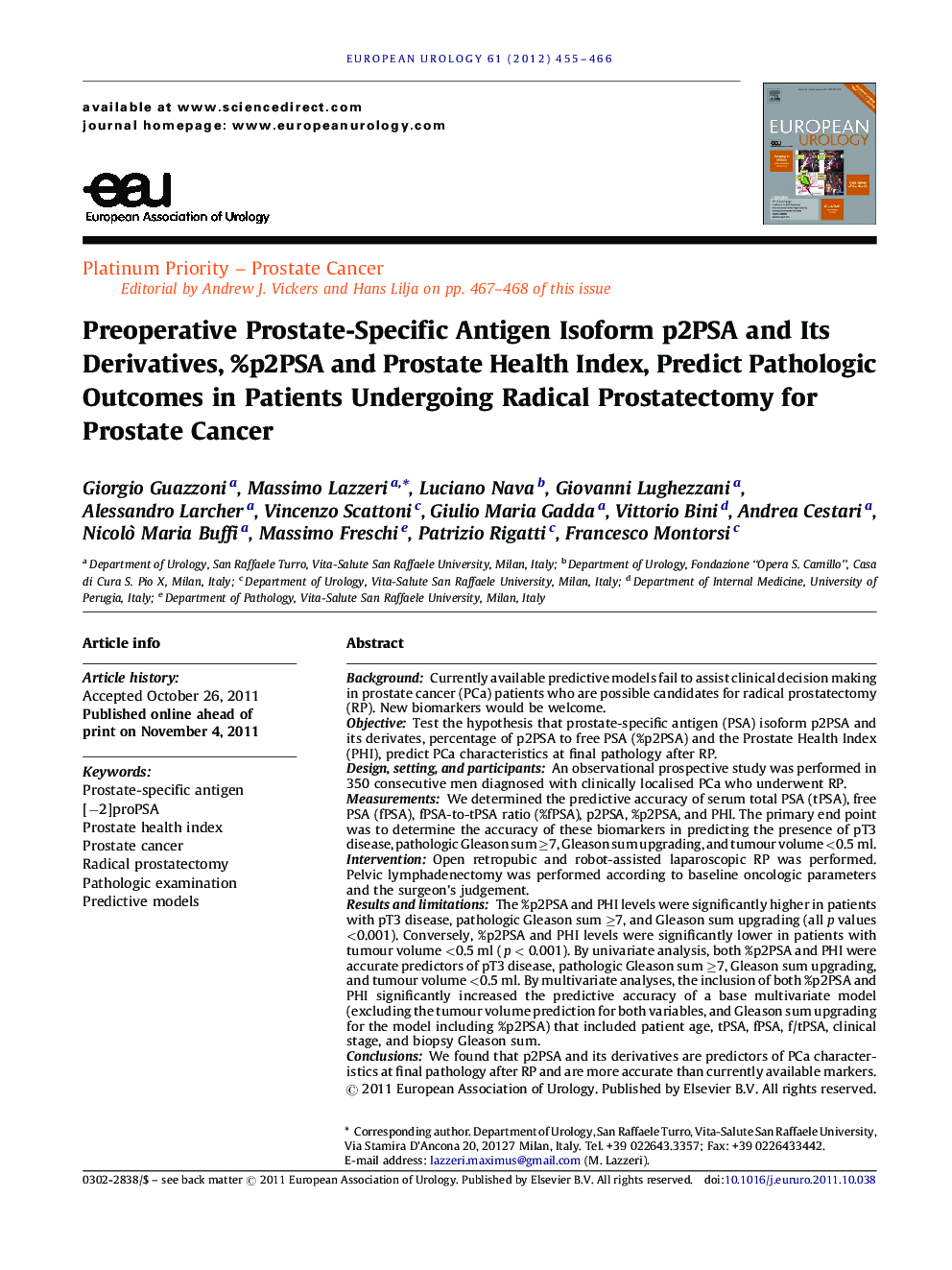| Article ID | Journal | Published Year | Pages | File Type |
|---|---|---|---|---|
| 3922823 | European Urology | 2012 | 12 Pages |
BackgroundCurrently available predictive models fail to assist clinical decision making in prostate cancer (PCa) patients who are possible candidates for radical prostatectomy (RP). New biomarkers would be welcome.ObjectiveTest the hypothesis that prostate-specific antigen (PSA) isoform p2PSA and its derivates, percentage of p2PSA to free PSA (%p2PSA) and the Prostate Health Index (PHI), predict PCa characteristics at final pathology after RP.Design, setting, and participantsAn observational prospective study was performed in 350 consecutive men diagnosed with clinically localised PCa who underwent RP.MeasurementsWe determined the predictive accuracy of serum total PSA (tPSA), free PSA (fPSA), fPSA-to-tPSA ratio (%fPSA), p2PSA, %p2PSA, and PHI. The primary end point was to determine the accuracy of these biomarkers in predicting the presence of pT3 disease, pathologic Gleason sum ≥7, Gleason sum upgrading, and tumour volume <0.5 ml.InterventionOpen retropubic and robot-assisted laparoscopic RP was performed. Pelvic lymphadenectomy was performed according to baseline oncologic parameters and the surgeon's judgement.Results and limitationsThe %p2PSA and PHI levels were significantly higher in patients with pT3 disease, pathologic Gleason sum ≥7, and Gleason sum upgrading (all p values <0.001). Conversely, %p2PSA and PHI levels were significantly lower in patients with tumour volume <0.5 ml (p < 0.001). By univariate analysis, both %p2PSA and PHI were accurate predictors of pT3 disease, pathologic Gleason sum ≥7, Gleason sum upgrading, and tumour volume <0.5 ml. By multivariate analyses, the inclusion of both %p2PSA and PHI significantly increased the predictive accuracy of a base multivariate model (excluding the tumour volume prediction for both variables, and Gleason sum upgrading for the model including %p2PSA) that included patient age, tPSA, fPSA, f/tPSA, clinical stage, and biopsy Gleason sum.ConclusionsWe found that p2PSA and its derivatives are predictors of PCa characteristics at final pathology after RP and are more accurate than currently available markers.
